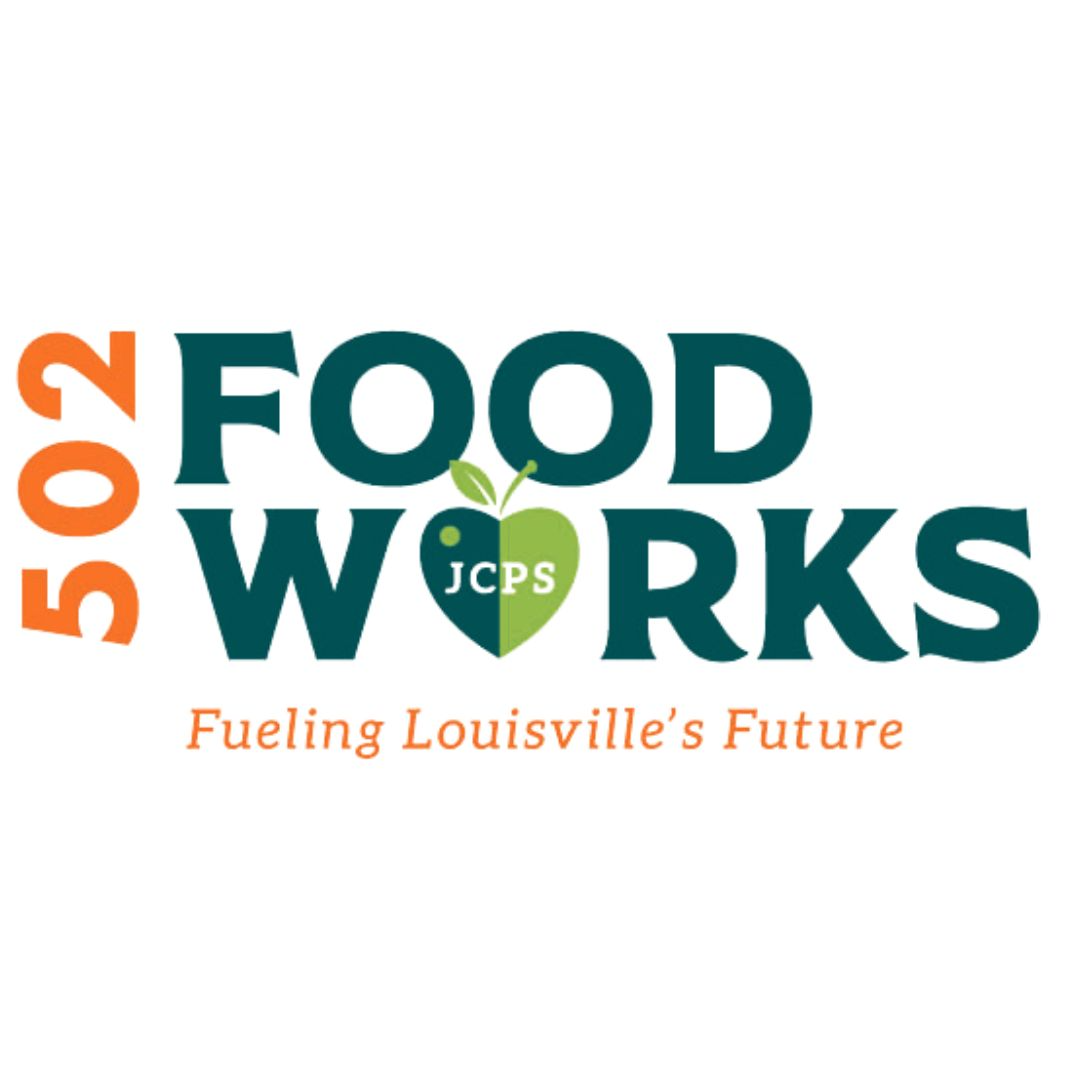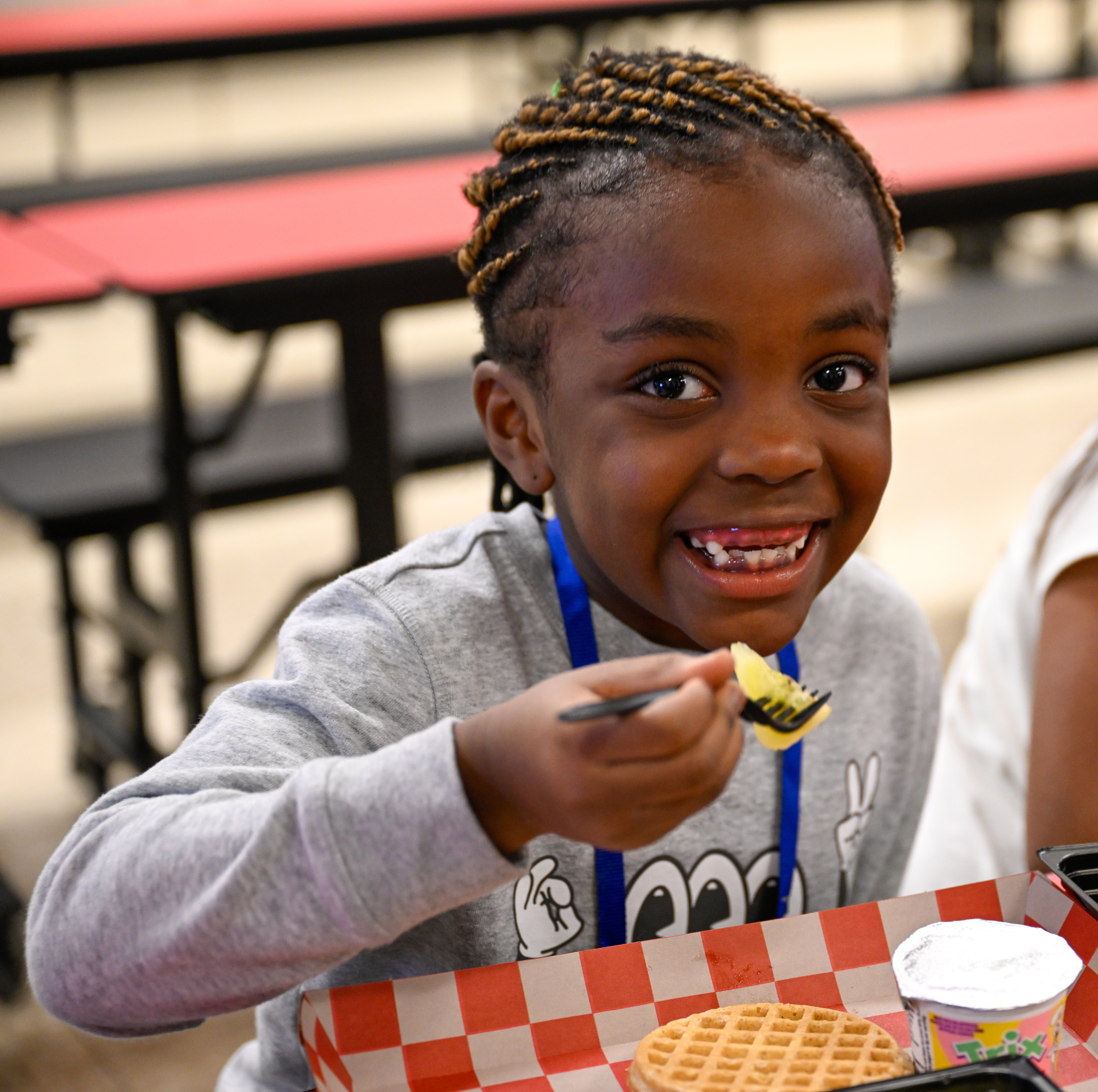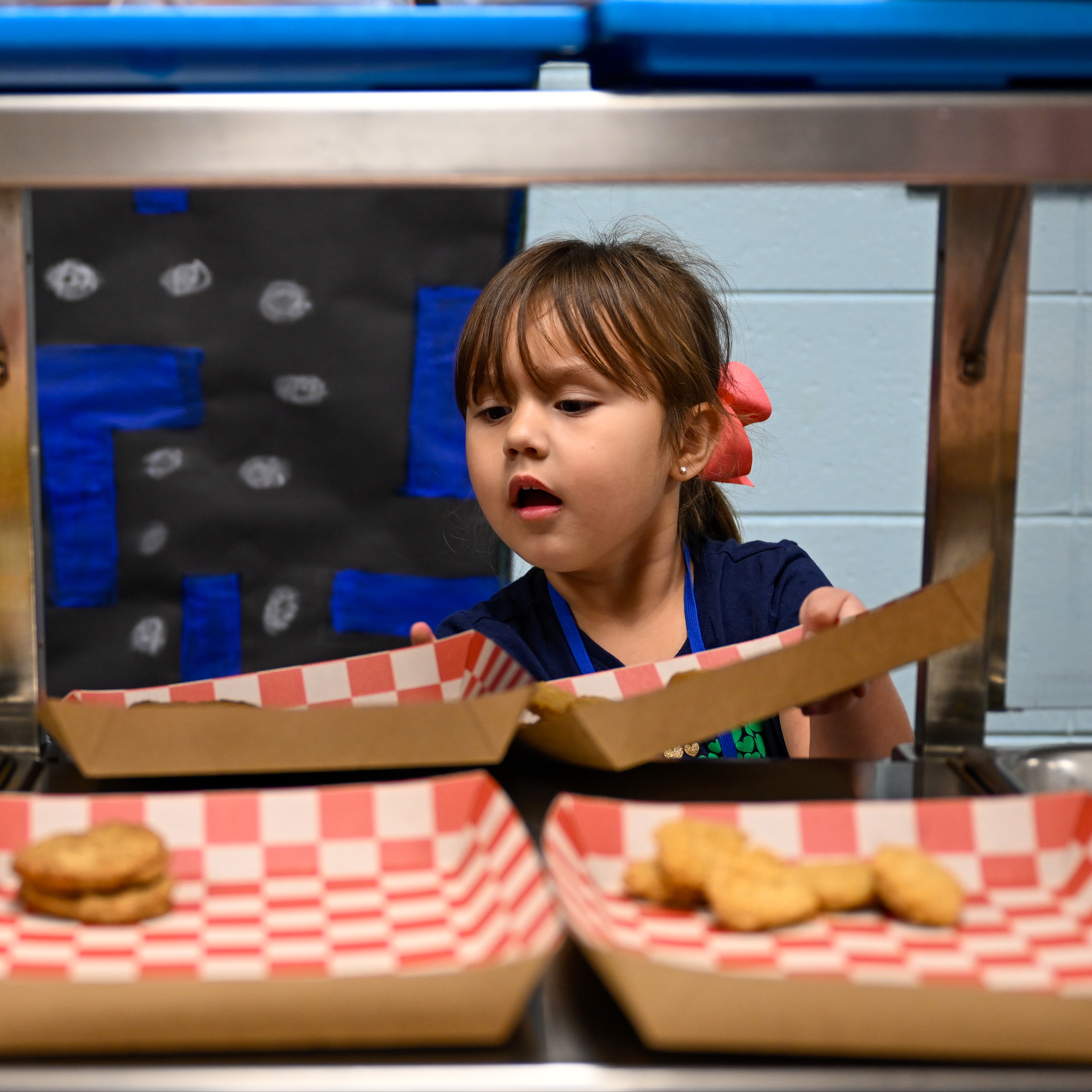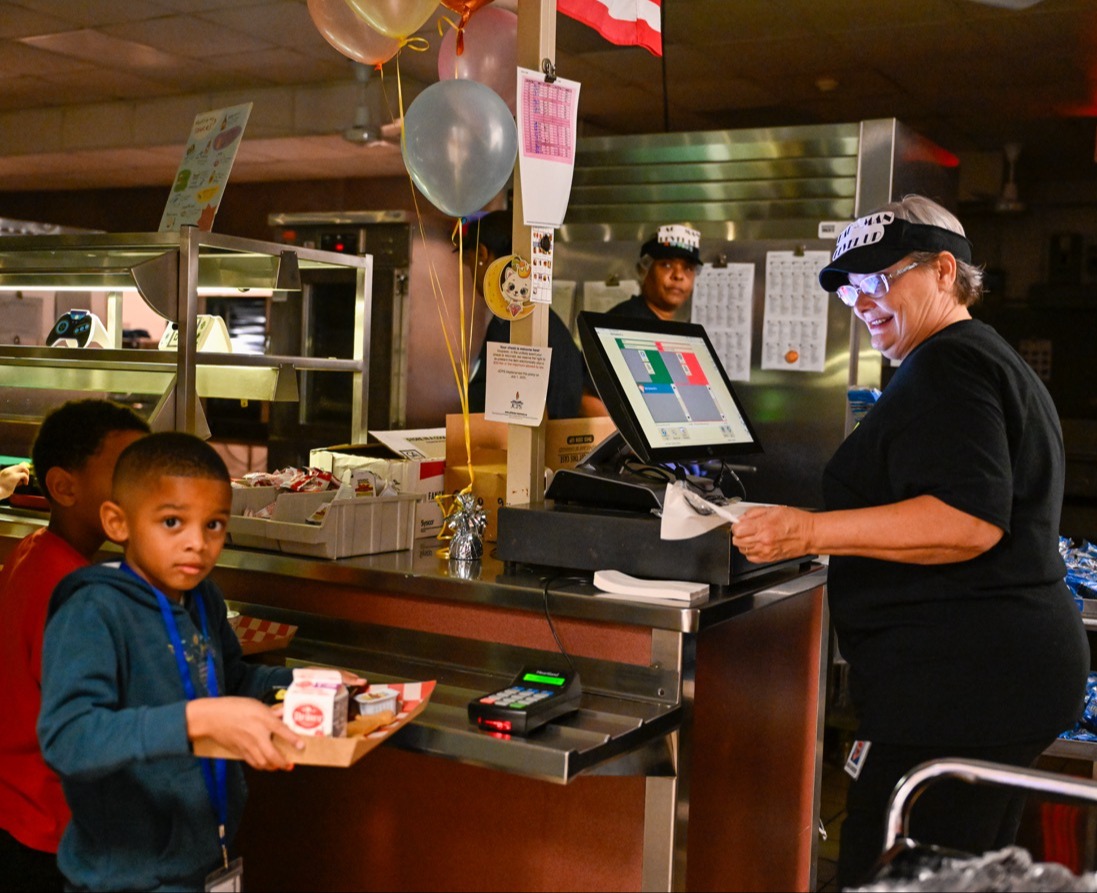Terina Edington
Executive Administrator, Nutrition Services
(502) 485-3186
terina.edington@jefferson.kyschools.us
School & Community Nutrition Services
Programs & Resources
Contact Us
Address
C.B. Young Jr. Service Center
Building 1
3001 Crittenden Drive,
Louisville, KY, 40209

Fueling Louisville's Future One Meal at a Time
The School and Community Nutrition Services Department, known as 502 Food Works, is responsible for ensuring that students have access to healthy and safe meals and snacks at all times. We follow the USDA's nutritional guidelines to provide well-balanced meals that include all five food groups. We provide breakfast, lunch, after-school programs, summertime meals, and emergency meals.
Student feedback is very important to SCNS and we encourage students to be involved by completing surveys, using the rating system for Nutrislice food items, and taking part in our Student Nutrition Advisory Councils (SNAC). Your feedback shapes the future of our menus and ensures we're serving meals our students love.
What is Community Eligibility?
Early Childhood Snacks
Households with Early Childhood students must complete a meal application each year for the CACFP snack program. Applications are available at your school or you may request one from your teacher.
You may also request a copy by calling (502) 485-6237 or 485-3986.
Nutrition Services Application Center
In-person application assistance is available through the Nutrition Services Application Center or you may call us at 485-6237 or 485-3986.
Contact Us
Shawnalee Smith
Specialist, Nutrition Services
(502) 485-6237
shawnalee.smith@jefferson.kyschools.us
Special Dietary Needs
Students with food allergies, food intolerances, or medical conditions affecting their major life or bodily functions have the right to request meal modifications. To make this request, a licensed physician (M.D., ARNP, D.O., or P.A.) must complete and sign the Special Dietary Needs Form, as required by the United States Department of Agriculture (USDA). This form documents special dietary needs that are necessary due to a medical disability. If there are any changes to the student’s special dietary needs in the future, an updated form signed by a licensed physician (M.D., ARNP, D.O., or P.A.) will be required.
Paper copies of the form are available from your child's school nutrition services coordinator. Parents are encouraged to inform their child's school office about all student allergies and communicate openly with the school nutrition staff.
Contact Us
Nutrition—Special Diets - Lilia Villegas lilia.villegas@jefferson.kyschools.us (502) 485-6480
To submit special dietary needs forms, email to:
nutritionspecialdiets@jefferson.kyschools.us
Health Forms
Caution: Common food allergen triggers—including dairy, eggs, fish, milk, nuts, soy, and wheat—may have come in contact with some or all JCPS foods due to cross-contamination in manufacturing or preparation.
Food Preferences
USDA Child Nutrition Programs are federal programs requiring accommodations if a child has a documented disability. Schools do not make modifications to meals based solely on food preferences. However, most food preferences may be able to be accommodated by making choices that are already available on the daily serving line.
If you want to inform the nutrition staff of your child’s personal or cultural food preferences, you may fill out the top half of the Special Dietary Needs Form. For personal and cultural preferences, a physician’s signature is not needed.
Menus and Locations
Our breakfast and lunch menus include the following information:
Elementary, middle, or high school menus
Summer Feeding locations
Allergen information
Nutritional facts
Carb counts and more!
Other menus, such as summer meals, CACFP suppers, CEP snacks, and other special event menus, are available upon request.
If you attend the Pathfinder School of Innovation and need information about meal service, contact (502) 485-3103.
Nutrislice App
JCPS school menus are available online and on your phone via the free Nutrislice app. Search School Lunch by Nutrislice in the Apple App Store or Google Play.
Nutrition Resources
Good nutrition and good education go hand in hand. Well-nourished students have higher test scores, better school attendance, and fewer classroom behavior problems. Research shows that the knowledge and skills children learn today help them choose healthier foods tomorrow and into adulthood.
Cafe Account Made Easy
While school meals are provided at no cost, parent may still want to set up on online account.
JCPS Nutrition Services partners with MySchoolBucks so parents can pay for à la carte items or extra entrees by using a credit or debit card. Parents may also monitor transactions and set up convenient email reminders when funds are running low.
If you have questions related to meal service payments, see contact to the right.
If you have questions regarding My School Bucks for school supplies, contact your school directly.
Meal Prices
Contact Us
Nutrition Services—Records & Reports Division- John Sewsanker
(502) 485-3198
Summer Meal Service
School Locations
Hot meals are served Monday to Friday. Occasionally, locations may serve ready-to-eat meals instead. Any child/teen 18 years of age or younger may participate.
Service times and types of service may vary by location, so please check our Summer Meals Finder or Nutrislice for details.
Mobile Routes
Ready-to-eat lunches will be available daily at various pools, parks, and communities, Monday through Friday, between 10 a.m. to 1 p.m. Times will vary for each site.
Please check our Summer Meals Finder by zipcode to find stops near you.
Summer Enrichment Sites and Other (community sites, school programs, bulk pick-up)
Breakfast and lunch will be offered free to all registered students taking part in various summer enrichment opportunities, i.e. YMCA CEP, Success League, etc. Menus for these programs may be accessed through program leaders at those sites or by contacting Nutrition Services.
For information about Non-Congregate Meal Sites, see link to flier on the right of this page.

Scan here to find sites and search by your zip code
Student-Friendly Meals with a Healthy Twist
JCPS serves healthier versions of student favorites, reducing sodium and added sugar and adding more local products. Our menus incorporate fresh vegetables like zucchini, butternut squash, and peppers into many of our recipes. On our serving lines you may see items like mini-sweet peppers, corn on the cob, apples, and watermelon when in season.
During Farm to School Week, SCNS highlights local products and invites local farmers to the schools. Fresh, local chicken has been served and well-received by students and staff. Local items on the menu include watermelon, peppers, apples, kale, strawberries, leafy greens, cabbage, broccoli, and cornmeal.
Student Nutrition Advisory Councils (SNAC groups) are present in schools to gather feedback and conduct surveys to determine students' preferred menu choices.





